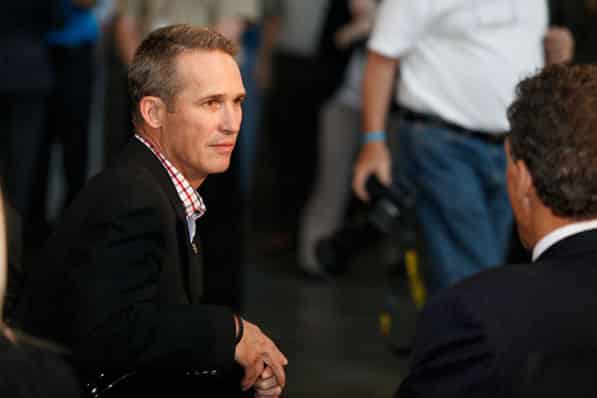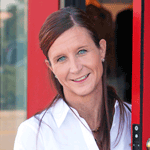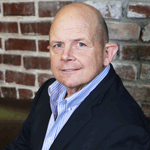The Minnesota North Stars went out with a whimper. After 25 seasons without a Stanley Cup championship, the franchise ended the 1992-1993 season with four consecutive losses to bring their record to 36 wins, 38 losses, and 10 ties. The team that had played in Minnesota since 1967 skated off the ice of Detroit’s Joe Louis Arena on April 15, 1993 sending passionate fans into a rage. To them, owner Norman Green had committed the biggest act of betrayal: he had signed a deal to take the team to Dallas, leaving Minnesota without a professional hockey team.
Four years later, Matt Majka sat around a table with a handful of people plotting the NHL’s return to Minnesota. The young University of Minnesota graduate started his career with a fledgling company called Rollerblade, eventually working as its vice president of product marketing and helping take annual revenues from $1 million to $200 million. Also in the room was Robert Naegele Jr., Rollerblade’s former owner, who was asking Majka to help bring hockey back to Minnesota. It wasn’t just a pipe dream. Naegele had applied for—and won—an unnamed NHL expansion team.
Majka accepted the offer and stepped into a new venture not unlike Rollerblade; both ventures had been start-ups, and both represented limitless potential. “I watched Rollerblade mature over 13 years, and I came to the Wild having seen what something with no history could be if it really took hold,” Majka says.

After the NHL granted the franchise in June of 1997, the group had three years to build their team. “We thought hockey could work again in Minnesota because of the state’s deep passion for the sport,” says Majka, “and we set out to get it right.” His marketing team spent the three years interviewing customers, sponsors, vendors, and fans about what they wanted and expected from a new NHL franchise.
The process led Majka and company to form a brand platform that still exists today: “The State of Hockey.” The phrase resonates with fans because it was born from the leadership group’s conversations with them. “The fans told us they were proud of the tradition and heritage of hockey in Minnesota,” Majka says. “It’s like Texas football or Indiana basketball. You can’t explain Minnesota hockey—you have to live it.” The team also allowed its fans to select the name. “The Minnesota Wild” was chosen from more than 13,000 submissions.
A new team would need a new stadium, and the Wild opened its four-level, $170 million Xcel Energy Center in September of 2000. Like the team itself, the Xcel Energy Center is rejuvenating downtown St. Paul. With a capacity crowd of 19,000, the environmentally sustainable and modern arena hosts events 175 days per year and serves as an economic engine for bars, hotels, restaurants, and other local businesses. When the Wild are not in town, the arena hosts concerts, rodeos, and other events. In 2008, it played host to the Republican National Convention.
Although it has been a success, professional hockey’s renaissance in St. Paul hasn’t been without its ups and downs. The Wild made the playoffs in its third season, but saw an NHL lockout cancel games and alienate fans just two years later. With new owner Craig Leipold in place, the team recovered to win its division in 2008, but then fell prey to injuries and free agency.
The last two years have marked a new era at the Xcel Energy Center. The stadium finds itself competing with a new MLB arena, Target Field, and a new NCAA Division I football field, TCF Bank Stadium, at the University of Minnesota. During the 2012 offseason and after another work stoppage, Leipold spent nearly $200 million to sign the league’s top two free agents, Zach Parise and Ryan Suter. Following the acquisitions, the Wild made the playoffs for the first time in four seasons.
With things on the ice looking up, Majka is using technology to conduct surveys and is once again looking for ways to maximize the fan experience. “We have an incredible team and an incredible building in which to watch hockey,” he says.
Fans seem to agree. Xcel Energy Center is routinely ranked among the highest in ESPN polls for best sports venue. Planned upgrades include new seats, a high-def scoreboard, and updated electric signage.
Thirteen years into their shared history, Minnesota’s new team and the new venue are wildly successful. Majka knows that the two go hand in hand. “The arena is just a building,” he says, “but the fans give it soul.”

